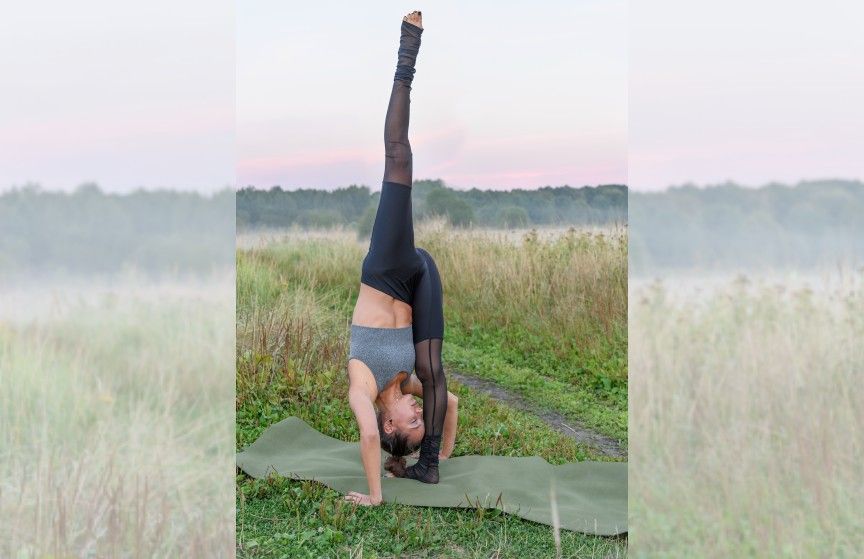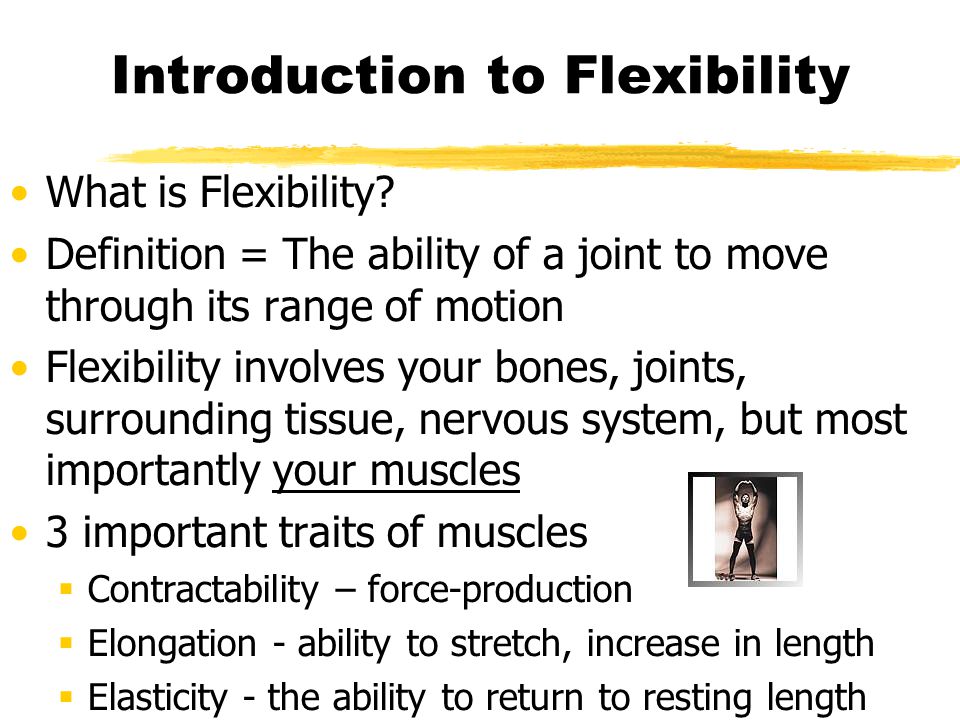
Yoga is a wonderful way to improve your flexibility. Yoga can help with stiffness and joint pain. When you first start the practice, it is easy to feel restricted by tightness in your hips or hamstrings. This inflexibility can cause poor posture or strain on the knee joint. It also reduces levels of dopamine and serotonin, which are neurotransmitters that improve mood and reduce stress.
A study found that yoga has a positive effect on chronic low back pain. This condition is common among veterans, and can seriously impact a person’s life quality. Participants in the study reported lower disability scores and intensity after a 12-week-long yoga program. Their use of opioids decreased, which is great news for chronic low-back pain sufferers. In addition, the benefits of yoga practice have been widely documented.
Yoga can be a great way to reduce stress. They can help improve your overall health and flow of lymph. During practice, you'll increase the lymph drainage system, which is a vital part of the body. The lymphatic systems is responsible for fighting infection, eliminating cancer cells, and disposing toxic waste products. Yoga can improve your sleep by reducing stress levels.

Stress can cause constipation. Yoga can reduce it by improving your posture. Yoga can also help with suffering, which can be very beneficial. In turn, stress can also contribute to bowel problems. Yoga can help reduce constipation. By training your mind to be more present, it improves your ability to concentrate, learn, and hold information.
Yoga has been shown to improve your cardiovascular health according to research. It has been proven that yoga can increase hemoglobin levels in the blood. This is the protein which carries oxygen to tissues. This is another benefit of yoga. Yoga can improve your heart health and reduce the chance of stroke and cardiovascular disease. It has been found to increase muscle strength as well flexibility in the hands, feet, and wrists. It can also improve balance, which is important for a variety of reasons.
Yoga can also have benefits for the spinal disks. The intervertebral discs between vertebrae are essential in preventing the compression of nerves and herniated spines. Keeping these discs mobile helps the disks in the spine get the nutrients they need. For spinal health, it is essential that you practice a variety yoga poses. It is possible to improve the flexibility of your muscles by performing asanas in this pose.
Yoga is well-known for its healing properties. It can help you combat depression and anxiety. In a 2015 study researchers found that those who did yoga twice a week experienced lower stress levels, and had better cardiovascular function. This makes them less susceptible to heart disease. This is a minor benefit but it is one of the most important. This helps them feel better and more confident about themselves.

As with other forms of exercise yoga improves your heart. This is because yoga helps to pump blood throughout the entire body. This means that it improves the overall health of our heart. This can help lower your risk of getting heart disease. Yoga can improve cardiovascular health and decrease your risk of developing heart problems. There is also no reason why you shouldn't try this exercise.
Yoga can help improve physical health and decrease the symptoms of heart disease. It can slow down the progression and severity of cardiovascular disease by decreasing levels of cholesterol, as well as other inflammatory compounds. It has been proven to reverse DNA changes and lower cortisol. It is known to prevent heart attacks, migraines and osteoporosis. It is great for mental health because it can help you deal with stress and improve concentration.
FAQ
What is a good 7-day workout schedule?
A seven-day exercise plan should include cardiovascular training (running/biking/swimming), strength exercises (using weight machines, free weights) and one flexibility/core program (yoga or Pilates). Each activity must be completed at least once per week. Each session should last no more than 45 minutes.
Cardiovascular Exercises: Swimming, Cycling, Running
It is important to complete at least 60 minutes of cardio per week. For best results, aim for 75 minutes per week. Cardio exercises can be used to increase blood flow, stimulate muscle growth, and improve blood circulation.
Strength Training
Cardio exercises focus on the heart and lungs while strength training targets muscles and bones. Strength training increases lean muscle mass and helps to burn calories even at rest.
Flexibility and core workouts
Your whole body will be stronger if you have flexibility and core training. Both yoga and Pilates can be great choices.
What dietary supplement is best for weight loss?
Exercise and diet are key to losing weight. Some people find that supplements can help them along the journey.
Many studies show that omega-3s may help you lose weight. Omega-3 fatty acid is an essential fat that is important for brain function as well as cell membrane integrity. They can be found in seafoods like salmon, tuna or shrimp, as well as cod liver oil.
Green tea is being studied for its potential benefits in weight loss. Green tea has catechins, which are antioxidants that can help increase metabolic rate and encourage weight reduction.
Is it possible to drink alcohol while training?
Yes. Alcohol can increase energy expenditure, speed recovery time, and reduce soreness.
The insulin sensitivity of alcohol is also increased, which makes it easier for glucose to be absorbed.
Alcohol can also cause dehydration which can lead to a slower metabolism. It also reduces testosterone production, which may decrease muscle-building potential.
For these reasons, women shouldn't drink alcoholic beverages before working out. Women who drink heavily should wait at LEAST 24 hours before they start working out.
The best thing for women who are pregnant is to avoid alcohol.
Men should drink only one glass of alcohol per day.
Is Cardio Better Than Strength Training?
Both are equally great. Cardio is better if you are looking to build muscle faster.
Cardio burns more calories in a minute than strength training and more fat.
Strength training builds muscle mass, but it takes longer to achieve this goal than cardio.
How To Lose Belly Fat Fast
There are many fast ways to lose belly fat. One way to reduce belly fat fast is to eat less food, and drink lots of fluids.
Running and swimming are two other ways to boost your metabolism.
To quickly reduce belly fat, avoid sitting too much. Stand up more often throughout the day. This will help you burn more calories.
There is an alternative option if you've tried all of these options and still have trouble losing belly fat.
You will need a belt to do this. It tightens around the waist when you sit.
You will feel more comfortable and be able to move around. This will make you lose more calories and help you reduce your belly fat.
Are There Any Benefits to Yoga?
Yoga has been around since ancient times and has gained popularity recently. Celebrities, as well as everyday people who are looking to stay fit and healthy, have made yoga a hugely popular choice.
Yoga is great because it strengthens your muscles as well as stretches them. Yoga can also help calm your mind and relax you.
Yoga and other forms exercise differ in that yoga is focused on breathing techniques.
For balance and flexibility, there are many poses you can do.
What is the best way to train?
It all depends on what you're looking for. To build muscle mass, you should first lift heavy weights. Next, move on to cardio. Then if you want to lose weight, go from cardio to strength training.
Cardio can be done if you want to just lose fat. You can then add strength training.
You should do cardio last if your goal is to increase muscle mass. This stimulates growthhormones, which helps build muscle mass.
Before you start your workout, it is a good idea to eat. This will give your muscles more fuel, so they work harder. It will also make you feel more energetic during your workouts.
Statistics
- Cardmembers earn 5% Back at Amazon.com with a Prime Credit Card. (amazon.com)
- According to the American Heart Association, blood pressure should be checked at least once every two years, beginning at age 20. (my.clevelandclinic.org)
- An estimated calorie range for moderately active adult males falls between 2,200 to 2,800 calories per day, depending on age. (eatright.org)
- 10 pounds in a month is likely during a lean bulking phase, especially for beginners. (muscleandstrength.com)
- Are You One of the 20% of Guys (mh.co.za)
External Links
How To
What's the best food for men?
Five servings of fruit and vegetables should be consumed daily by men. Men should also limit their consumption of red meat and avoid fast food.
Antioxidants are found in fruits and vegetables, which protect against cardiovascular disease and other diseases.
Vegetables include broccoli, cauliflower, carrots, spinach, tomatoes, peppers, cucumbers, lettuce, mushrooms, etc.
Beans and peas have high fiber and protein.
Omega-3 fatty acids are abundant in nuts and seeds. Essential for hormone production and brain function, omega-3 fatty acids are vital.
Fish is another great source of omega-3s. Fish contains more mercury than most other meats. However, fish liver oil does contain fewer toxins.
Omega-6s found in vegetable oils like corn, soybean, safflower, sunflower, and cottonseed oils are necessary for average growth and development.
Poultry is a good source of lean protein. Chicken breast is one of the healthiest meats.
Lean beef is low in saturated fats and cholesterol. You should limit your intake of red meat as it can increase your risk for prostate cancer.
Avoid hot dogs and sausages. These products can cause cancer by containing nitrates.
Exercise is essential to maintaining good health. But what if you're already working out regularly? Is there something you can do to improve your physical condition or keep it that way?
The answer is yes! You have many options to maximize your workouts. These are some tips that will help you get the most out of your workouts.
Start slowly. Injure yourself if your first session is too intense. You should start at a pace that you are comfortable with and increase your intensity gradually.
Before and after stretching. Stretching can help to loosen tight muscles, decrease soreness, improve flexibility, and reduce pain. You can stretch sitting down, standing, or moving around.
Cool down. This is especially important when you are doing cardio exercises. Your body needs time to recover between sessions, so it doesn't become tiring. Take deep, slow breaths to cool down.
Hydrate. Drinking plenty of fluids helps keep you hydrated and reduces muscle cramps. Sports drinks, however, can be beneficial.
Make sure you eat healthy. Make sure you are getting enough calories each day. Eating regular meals throughout the day will help you stay energized and focused during your workout.
Get enough sleep. Sleep well and you will feel refreshed when you wake up. It is essential to get enough sleep in order to repair damaged tissues.